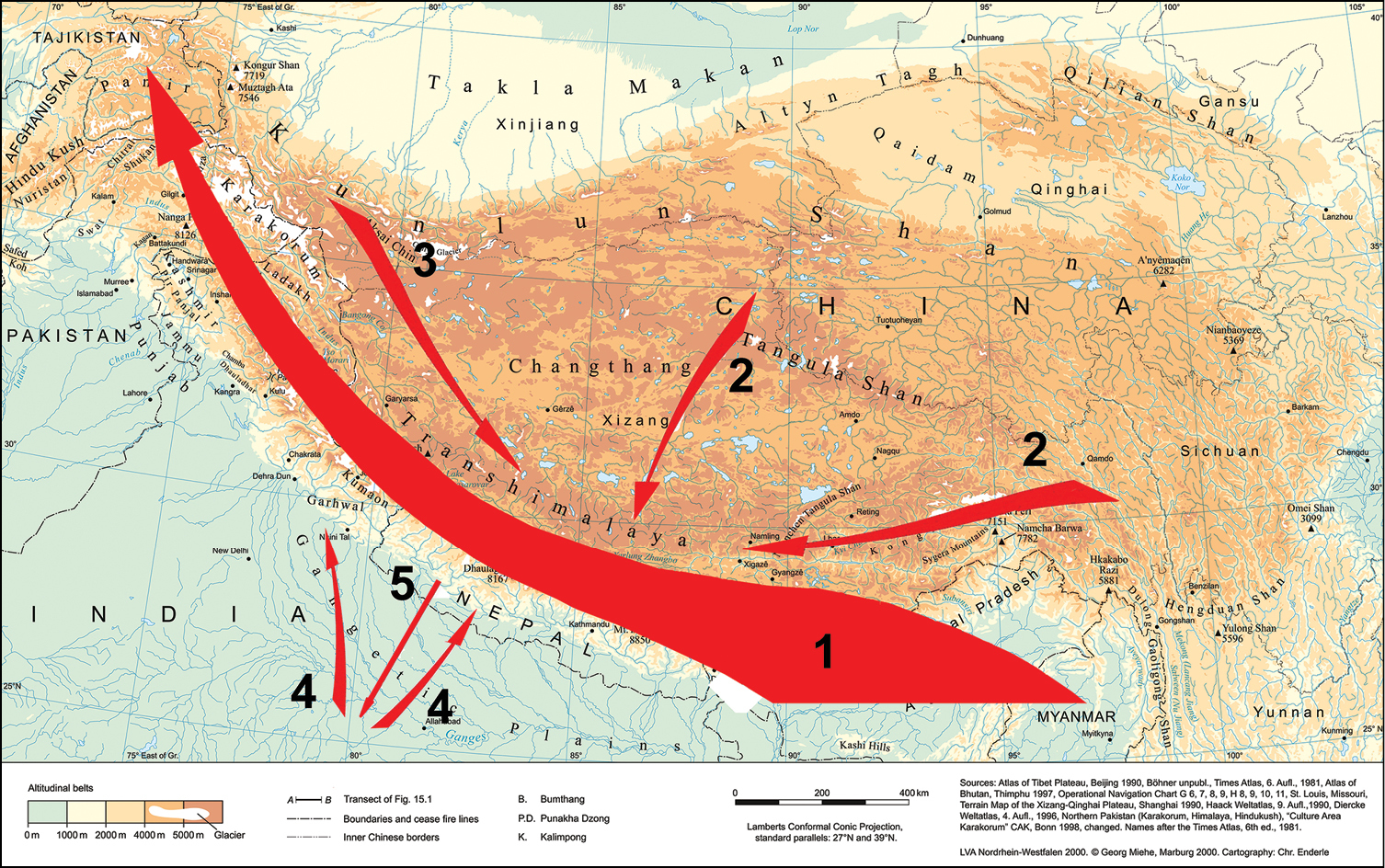
|
||
|
General schematic picture of the faunogenesis of Himalayan Diplopoda. Arrows reflect the main pathways of faunal migration or exchange, their thickness roughly corresponding to the degree of influence. The thickest arrow 1 clearly emphasizes the dominant roles the Indo-Malayan core fauna may have played in the present-day composition of the Himalayan fauna, its most ancient layers extending westwards to reach central and western Asia, as well as Europe (by default also northwards up to eastern Asia and even North America). The considerably less thick arrows 2 and 3 are to reflect the more subordinate roles the Sino-Himalayan and Palaearctic elements, respectively, could have played in the modern Himalayan fauna. Arrows 4 and, especially, 5 are even less thick and demonstrate the relatively minor faunal exchanges to be presumed between the Indian and Himalayan faunas. |